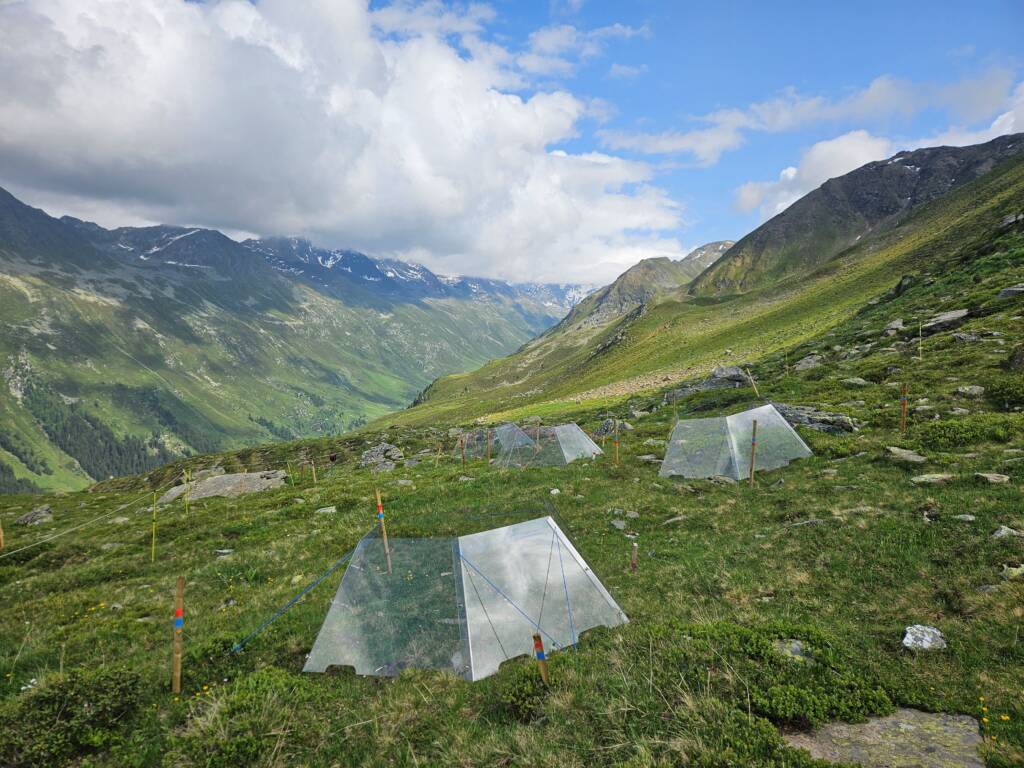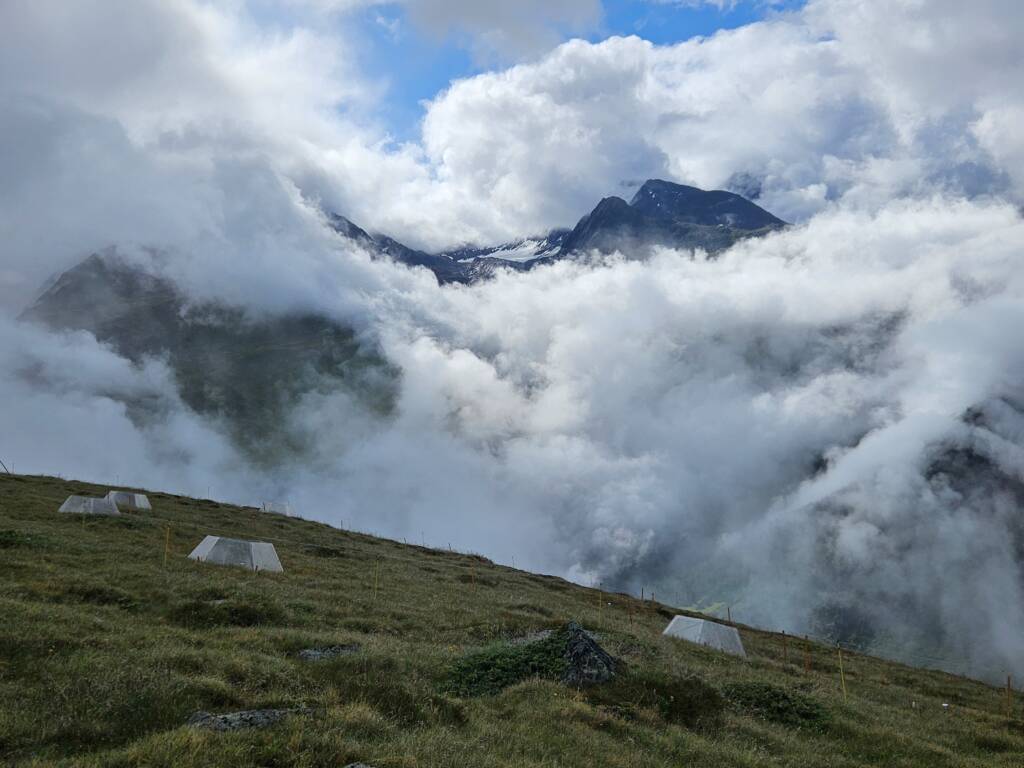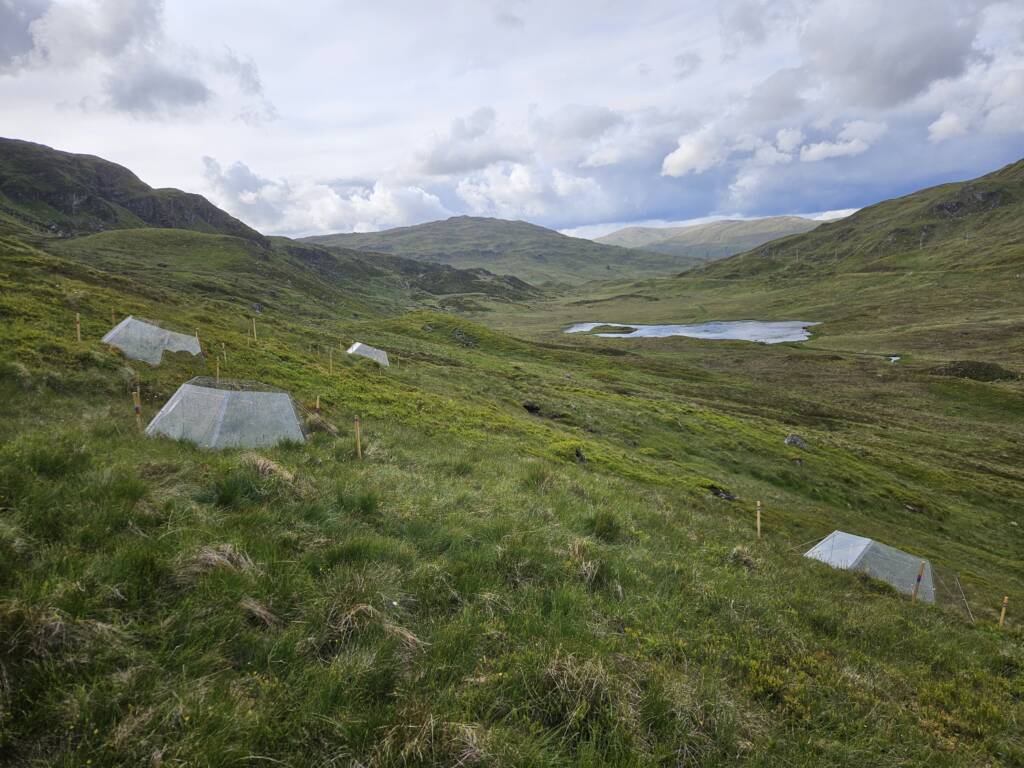IAP-25-023
Climate change impacts on soil biodiversity and functioning in mountain ecosystems
Over half of Earth’s species are found in the soil (Anthony et al., 2023). This immense below-ground biodiversity supports many ecosystem functions and services for humanity (Bardgett & van der Putten 2014). Yet surprisingly little is known about the rich diversity of life below our feet, or how it will be affected by climate change (Guerra et al, 2020; Jansson et al, 2020). This PhD will tackle these important research challenges within the setting of mountain ecosystems.
Mountains are warming 2-3x faster than the global average (Pepin et al., 2015); while at the same time experiencing widespread changes in land-use patterns. This is leading to shifts in mountain vegetation, such as shrub expansion and natural woodland regeneration. Yet, how these changes alter soil biodiversity, and what the consequences are for ecosystem functions, remains unclear.
Mountain ecosystems also show fascinating seasonal dynamics, both above- and below-ground (Broadbent et al., 2024). How seasonality influences the linkages between soil biodiversity and ecosystem functioning is still poorly understood, especially under climate change, which can alter the timings of seasonal transitions (Broadbent et al 2021).
Disentangling the direct and indirect mechanisms by which climate change affects soil biodiversity is of fundamental importance. Warmer temperatures and changing seasonality will directly affect life in the soil. But the responses of aboveground communities, such as plants and insects, can also have strong feedback effects belowground, with important consequences for ecosystem functioning.
The project will primarily focus on soil faunal diversity (mainly invertebrates). Soil fauna are crucial for many ecological functions, yet soil faunal diversity is a major blind spot in mountain ecology (Praeg et al., 2025). The research conducted by the PhD student will therefore address fundamental research challenges, and fill important knowledge gaps.
The PhD student would be based in the vibrant research environment of the Division of Biological and Environmental Sciences at the University of Stirling, Scotland. The University is based on a beautiful campus and is home to a welcoming and supportive academic community.
The PhD student will also benefit from collaborations with internationally leading research partners, including the UK Centre for Ecology and Hydrology (UKCEH, Wallingford), and the Swiss Federal Institutes for Forest, Snow and Landscape Research (WSL, Zurich) and Snow and Avalanche Research (SLF, Davos).
The specific research questions that the PhD will address are flexible, within the general topics outlined above. The PhD student will be encouraged to develop novel and exciting research questions, which interest them. These could include:
1. What controls soil faunal diversity at different spatial and temporal scales (e.g., vegetation, seasonality), and how does this link to ecosystem functioning?
2. How does climate change affect soil biodiversity and ecosystem functioning in mountain ecosystems?
3. Which direct and/or indirect mechanisms (e.g., climate warming vs. shifts in vegetation) primarily drive these effects?
4. How do multiple global change factors, such as warming, nitrogen pollution and changes in vegetation, interactively affect soil biodiversity and ecosystem functioning?



Click on an image to expand
Image Captions
Open-top chambers to simulate climate change at field experimental site in Swiss Alps,Field experiment site in Austrian Alps,Field experiment site in Scottish Highlands
Methodology
The PhD project will use a combination of field and lab studies, such as soil sampling of different vegetation types or seasonal transitions in mountain ecosystems; new climate change experiments at field sites in the Scottish Highlands or European Alps (see images); and lab manipulations using the controlled environment facilities at the University of Stirling.
The PhD student will learn state-of-the-art techniques for measuring biodiversity, namely eDNA metabarcoding using 18S and/or COI amplicon sequencing of soil invertebrates, followed by bioinformatic analyses and multivariate statistics. These techniques can be carried out alongside traditional microscopy methods of identifying soil fauna, potentially in tandem with AI-enabled high-throughput screening of samples. Importantly, the PhD student will also learn and employ methods for assessing soil functions and biogeochemistry, including carbon and nutrient cycling. Scientific assessments of biodiversity and ecosystem functioning go hand-in-hand, and the PhD student will learn powerful combinations of techniques to address how research areas.
To help with this, we have significant expertise in the Biological and Environmental Sciences Division at the University of Stirling, including the two Stirling-based supervisors (Dr. Arthur Broadbent and Prof. Jens-Arne Subke). The PhD student will also benefit hugely from our collaborations with leading scientists at the UK Centre for Ecology and Hydrology (Dr. Lindsay Newbold), the Swiss Federal Institute for Forest, Snow and Landscape Research (Dr. Irene Cordero) and the Institute for Snow and Avalanche Research (Dr. Anne Kempel). This set of co-supervisors have extensive experience in a variety of soil, plant and insect biodiversity assessment methods, including molecular, microscopy and field-based techniques.
The successful candidate should enjoy and have some aptitude for field and lab work, quantitative skills such as data analysis, and writing. These are all essential skills for a career in ecological research, but are also transferable to, and highly valued in, other career paths.
Project Timeline
Year 1
1. Literature review and hypotheses development
2. Experiment planning
3. Basic skills training (e.g., field and lab skills, data analysis in R).
4. Conduct experiment/study 1 (fieldwork)
Year 2
1. Lab work and data analysis for experiment/study 1
2. Advanced skills training (e.g., bioinformatics, multivariate statistical analysis)
3. Start writing thesis; potential preparation of literature review for publication
4. Conduct experiment/study 2 (fieldwork)
Year 3
1. Lab work and data analysis for experiment/study 2
2. Continue writing thesis/ manuscripts
3. Conduct experiment/study 3 (controlled lab manipulation)
Year 3.5
1. Data analysis experiment/study 3
2. Finish writing thesis and work on manuscripts
Training
& Skills
The PhD student will learn and employ state-of-the-art techniques for assessing soil biodiversity and ecosystem functioning, as described in the methodology section.
The quantitative and data analysis skills that the PhD student will develop are highly prized throughout the environmental sciences sector, including both academic research and private industry.
The PhD student will also learn fieldwork skills, alongside important transferrable skills, such as project planning and execution; effective presentation and communication skills; independence and resilience.
By the end of the PhD, the student will have acquired a comprehensive set of competencies and experience, which will serve them well in their future career. There will also be opportunities for networking throughout the PhD to facilitate career progression.
References & further reading
Anthony, M. A., et al. (2023). Enumerating soil biodiversity. Proceedings of the National Academy of Sciences, 120(33), 2017. https://doi.org/10.1073/pnas.2304663120
Bardgett, R. D., & Van Der Putten, W. H. (2014). Belowground biodiversity and ecosystem functioning. Nature, 515(7528), 505–511. https://doi.org/10.1038/nature13855
Broadbent, A. A. D., et al., (2024). Climate change disrupts the seasonal coupling of plant and soil microbial nutrient cycling in an alpine ecosystem. Global Change Biology, 30(3), 1–14. https://doi.org/10.1111/gcb.17245
Broadbent, A.A.D, et al., (2021) Climate change alters temporal dynamics of alpine soil microbial functioning and biogeochemical cycling via earlier snowmelt, The ISME Journal, 15(8). https://doi.org/10.1038/s41396-021-00922-0
Guerra, C.A., et al. (2020) Blind spots in global soil biodiversity and ecosystem function research. Nat Commun 11, 3870. https://doi.org/10.1038/s41467-020-17688-2
Jansson, J.K., Hofmockel, K.S. (2020) Soil microbiomes and climate change. Nat Rev Microbiol 18, 35–46. https://doi.org/10.1038/s41579-019-0265-7
Pepin, N., et al., (2015). Elevation-dependent warming in mountain regions of the world. Nature Climate Change, 5(5), 424–430. https://doi.org/10.1038/nclimate2563
Praeg, N., et al., (2025). Biodiversity in mountain soils above the treeline. Biological Reviews, 100, 1877–1949. https://doi.org/10.1111/brv.70028

